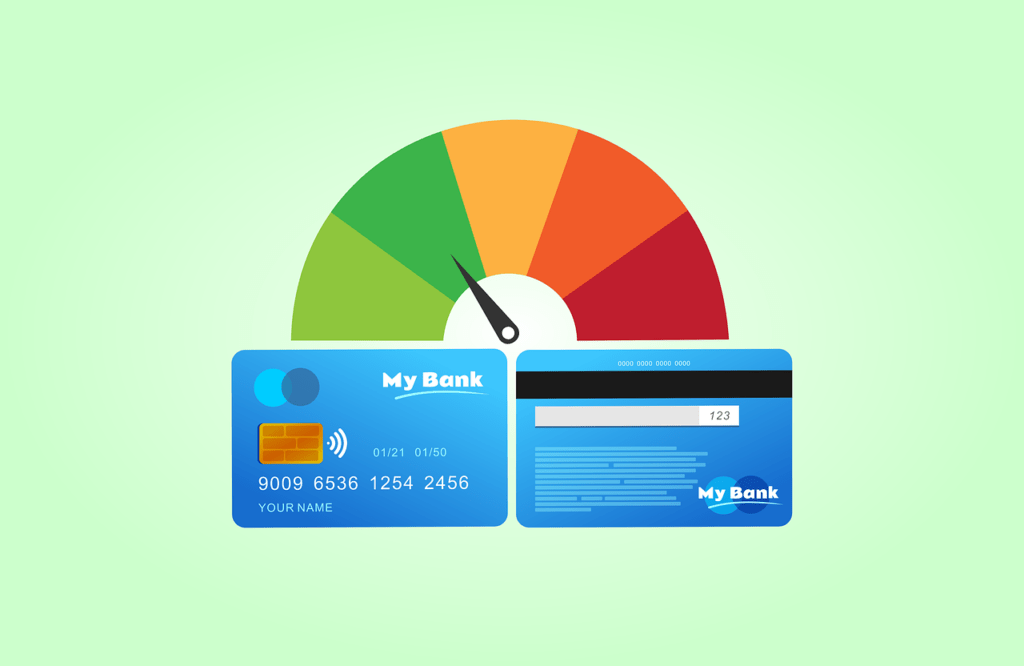Having bad credit can make getting approved for a new credit card more challenging. But with the right strategy, you can find cards that are accessible even if your credit score isn’t perfect.
The key is understanding what constitutes bad credit, being strategic with your applications, and using whatever card you get approved for responsibly. With time and positive credit habits, a bad credit score doesn’t have to hold you back forever.
What Constitutes Bad Credit?

Before applying for any credit cards, it’s important to check your credit score so you understand what credit tier you fall into. This gives you a realistic idea of what cards you may or may not qualify for.
The most commonly used credit scoring model is the FICO score, which ranges from 300 to 850. Here is how the scores break down:
- 800-850: Exceptional
- 740-799: Very Good
- 670-739: Good Credit
- 580-669: Fair Credit
- 300-579: Very Poor Credit
FICO considers scores under 580 to be poor or bad credit. The lower your score, the fewer card options you’ll have and the harder it may be to get approved.
Other scoring models, like VantageScore, have similar ranges and definitions for good and bad credit. No matter which model a lender uses, you want to aim for a minimum of a fair credit score for the best card approval odds. But even bad credit cards are still within reach if you apply strategically.
Should You Get a Secured or Unsecured Card?
With bad credit, you’ll typically have two main options for credit cards – secured or unsecured. Understanding how they work can help you decide which route may be the easiest for getting approved with poor credit.
Secured Credit Cards
Secured cards require an upfront refundable deposit, usually at least $200, that acts as collateral on the account. Your deposit then determines your starting credit limit.
The biggest advantage of secured cards is that the deposit reduces the risk for issuers. This makes approval easier for people with no credit or bad credit. Just be prepared to put down an initial deposit.
Pros
- Easier approval odds with bad credit
- Deposit helps secure initial line of credit
- Can graduate to unsecured cards later
- Builds positive payment history
Cons
- Requires refundable deposit
- Lower initial credit limits
- Fewer rewards compared to unsecured cards
Unsecured Credit Cards
Unsecured cards don’t require an upfront deposit, giving you more flexibility. However, approval tends to be harder with bad credit since there is no deposit, mitigating your risk. Many unsecured cards for poor credit also charge fees and high APRs.
If you want to avoid a deposit but still get approved, an unsecured subprime card could work. Just read the fine print to understand the potential costs.
Pros
- No deposit needed to get card
- More flexibility with spending limit
- Chance to build credit responsibility
Cons
- Harder approval odds with poor scores
- Often charge annual and monthly fees
- Much higher APRs than secured cards
- Low initial credit limits
For bad credit, a secured card often provides the most realistic approval odds in exchange for the deposit. But everyone’s situation is different. Consider both routes as you seek your first card or look to rebuild credit.
READ ALSO: How to Get a Personal Loan With Bad Credit
Getting Approved as an Authorized User
Becoming an authorized user on someone else’s credit card is another avenue to consider. You get access to an existing line of credit without applying yourself.
Ask a family member or partner with good credit to add you to one of their cards. As an authorized user, their positive payment history can start to gradually improve your credit, especially if they keep card utilization very low.
Just make sure the primary cardholder understands you aren’t financially responsible for the card as an authorized user. And ask if the card reports authorized user activity to credit bureaus.
Pros
- Piggybacks on primary user’s credit habits
- No formal application needed
- Chance to rebuild credit passively
Cons
- Less impact than having own credit card
- Shared spending limit with primary user
- Dependence on user managing card well
For a hands-off approach, becoming an authorized user can benefit your credit health over time without needing approval for your own line of credit yet.
Getting Approved for Retail Store Cards
Major retail chains often offer credit cards for shopping primarily at their stores. The approval requirements tend to be more relaxed than with traditional bank cards, even if your credit isn’t great.
Just keep in mind that retail cards commonly assess higher interest rates and weaker reward structures to balance out the more lenient approvals. But when used properly, they can still help build your score.
Pros
- Easier approval odds across credit tiers
- Additional discounts and reward incentives
- Fewer hard checks than traditional cards
Cons
- Limited acceptance outside affiliated stores
- Weaker rewards rates and perks
- Higher long-term borrowing rates
Retail cards shouldn’t necessarily be Plan A when rebuilding credit, given their drawbacks. But they provide additional approval possibilities in a pinch if you get declined for secured cards or simply want backup access to credit.
Expert Tips for Getting Approved
To boost your odds of getting approved for any credit card with bad credit, experts have provided these key recommendations:
“Only apply for 1-2 starter cards at first rather than too many at once. This reduces hard inquiries that could temporarily ding your score more.” – Holly Johnson, Award-Winning Credit Card Expert
“Consider becoming an authorized user first to accumulate positive monthly account reporting.” – Eric Rosenberg, Personal Finance Expert and Author
“If going solo, find cards that allow prequalification to avoid unnecessary hard checks.” – Beverly Harzog, National Consumer Credit Expert
“Avoid carrying balances each month on whatever card you get approved for. This only digs the credit hole deeper with accruing interest.” – Andrea Woroch, Nationally Syndicated Consumer Finance Columnist
In summary: Start small application-wise, reduce hard checks where possible, leverage other positive accounts if needed, and commit from day one to timely payments and promoting responsible spending habits.
READ ALSO: What Makes a Credit Card Ideal for Someone with Bad Credit
To Recap
A bad credit score makes getting approved for exciting new credit cards with juicy welcome bonuses unlikely. You first must lay the groundwork, spending-wise before graduating to that level.
But all hope isn’t lost when your score slips into the subprime zone. Issuers still want to lend it to you – it just comes with more strings attached. By understanding what constitutes bad credit, considering secured card requirements, adding your name as an authorized user, or applying for retail store cards, you can secure access to credit. Rebuilding then happens slowly as you exhibit consistency with lower limits and higher rates. But it is very doable.
The most vital element isn’t what bad credit card you end up with now but rather keeping your long-term trajectory headed upward. This requires ingraining habits like:
- Paying all minimum balances on time
- Charging only what you can quickly pay off
- Not cancelling your oldest accounts
- Monitoring your reports for errors
Stick to these credit card commandments, and you’ll watch your access and terms improve month after month. One day, you will enjoy those reloadable 5% rewards cards reserved only for exceptional borrowers.
Frequently Asked Questions
What credit score is needed for approval?
There is no one magic minimum score needed across all cards. As scores decline, approval becomes more challenging. But persistent applicants can usually secure credit even through the deep subprime tier. Expect higher costs via fees, deposits, and interest rates.
How long does bad credit approval last on your report?
Negative marks like late payments typically remain on your credit history for 7 years. Bankruptcies can last for up to 10 years. As negative items age, they hurt your score less. But new missed payments reset the clock, so staying current is essential.
Do retail cards help build your credit?
Yes, managing retail cards properly helps build a positive history. Just keep utilization very low and make payments on time every month. Avoid sneaky deferred interest promotions that could damage your profile if unpaid in time.
Can you go from bad credit to good credit?
Absolutely. Consistent on-time payments, low balances relative to limits, credit mix variety over time, and letting negative marks continue to age will usually help bad scores enter the good range within 1-2 years. Patience and perseverance pay off here.
In another related article, Best Bad Credit Auto Loan Rates for 2023




